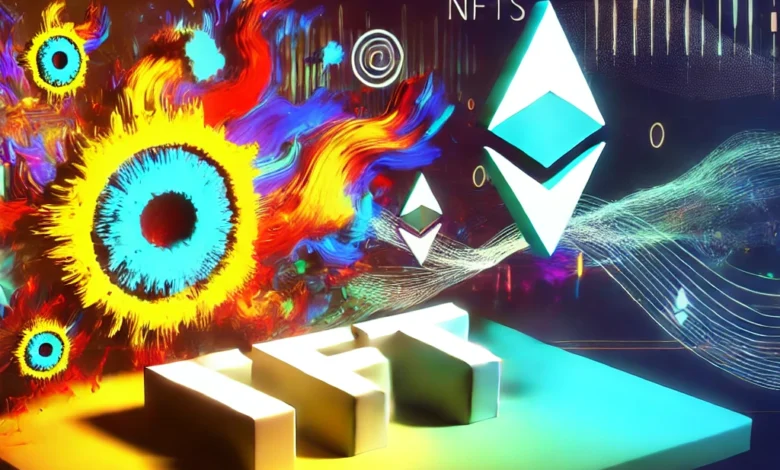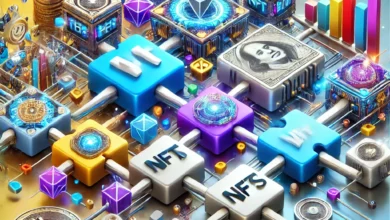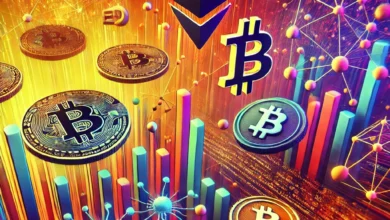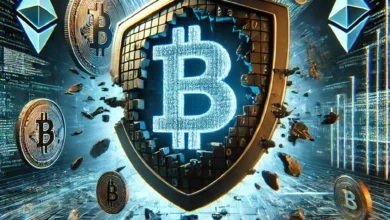Navigating the World of DeFi and NFTs: A Comprehensive Guide

Non-Fungible Tokens, or NFTs, are unique digital assets that represent ownership of a specific item or piece of content, verified through blockchain technology. Unlike cryptocurrencies such as Bitcoin or Ethereum, which are interchangeable and hold the same value, NFTs are one-of-a-kind.
The Role of NFTs in Digital Art
NFTs have revolutionized the digital art world by providing a way to authenticate and monetize digital creations. Artists can mint their works as NFTs and sell them directly to collectors, ensuring they receive proper attribution and compensation.
Key Use Cases for NFTs
- Digital Art: Artists can create, sell, and trade digital artworks as NFTs. Each piece is unique and can be verified on the blockchain, ensuring its authenticity and provenance.
- Collectibles: Digital collectibles, such as virtual trading cards or in-game items, can be represented as NFTs. Platforms like NBA Top Shot have popularized this use case by allowing fans to buy and trade video highlights as NFTs.
- Virtual Real Estate: In virtual worlds like Decentraland and The Sandbox, users can purchase and develop virtual land as NFTs. These virtual properties can be bought, sold, and traded, much like physical real estate.
- Music and Entertainment: Musicians and entertainers are using NFTs to distribute their work and offer exclusive content to fans. Artists like Kings of Leon and Grimes have released albums and artworks as NFTs, creating new revenue streams and fan experiences.
- Domain Names: Blockchain-based domain names, such as those offered by Unstoppable Domains, can be bought and sold as NFTs. These domains are decentralized, offering increased security and ownership rights compared to traditional domain registries.
Benefits of NFTs
- Ownership and Authenticity: NFTs provide verifiable ownership and authenticity for digital assets, addressing issues of piracy and unauthorized distribution.
- Monetization Opportunities: Creators can monetize their digital works directly, bypassing traditional gatekeepers and earning royalties from secondary sales.
- Enhanced Fan Engagement: NFTs allow artists and creators to offer unique, exclusive content and experiences to their fans, fostering deeper engagement and loyalty.
- Interoperability: NFTs can be used across different platforms and applications, providing flexibility and utility for both creators and collectors.
The Intersection of DeFi and NFTs
DeFi and NFTs are not mutually exclusive; they often intersect in ways that enhance the functionality and value of both technologies. For example, NFT collateralization allows users to use their NFTs as collateral for DeFi loans, unlocking liquidity without having to sell their prized digital assets. Additionally, DeFi protocols are increasingly integrating NFTs into their ecosystems, offering new ways to earn, trade, and invest.
NFT Collateralization
Platforms like Aave and Arcade are pioneering the use of NFTs as collateral for loans. This process involves locking an NFT in a smart contract to secure a loan, allowing the borrower to access liquidity while retaining ownership of the NFT. This innovative approach combines the benefits of DeFi lending with the unique value of NFTs.
Fractional Ownership
Fractional ownership of NFTs allows multiple investors to own a share of a valuable digital asset. Platforms like Fractional and NIFTEX enable this by splitting an NFT into multiple fungible tokens that can be bought and sold. This democratizes access to high-value NFTs, allowing more people to invest in and benefit from the growing NFT market.
NFT Staking and Yield Farming
Some DeFi platforms offer NFT staking and yield farming opportunities, where users can stake their NFTs to earn rewards. This incentivizes holding and using NFTs within DeFi ecosystems, creating additional value and utility for NFT holders.
Challenges and Considerations
While DeFi and NFTs offer numerous benefits and opportunities, they also present challenges that need to be addressed:
Security Risks
The decentralized nature of DeFi and the novelty of NFTs make them attractive targets for hackers and scammers. Users must be vigilant and use reputable platforms to mitigate risks. Smart contract vulnerabilities and phishing attacks are common threats in the DeFi space.
Regulatory Uncertainty
The regulatory environment for DeFi and NFTs is still evolving. Governments and regulatory bodies worldwide are grappling with how to approach these new technologies. Users and platforms must stay informed about regulatory developments to ensure compliance and avoid legal issues.
Environmental Impact
The energy consumption associated with blockchain networks, particularly those using proof-of-work consensus mechanisms like Ethereum, has raised concerns about the environmental impact of DeFi and NFTs. Efforts to transition to more energy-efficient models, such as Ethereum’s move to proof-of-stake, are underway to address these concerns.
Market Volatility
The volatility of cryptocurrency markets can impact the value of DeFi assets and NFTs. Investors and users should be aware of the risks associated with market fluctuations and exercise caution when engaging in DeFi and NFT activities.




